Jul 9, 2024 11:35 AM
Trumpeter, Educator Jim Rotondi Dies at 61
Jim Rotondi, a renowned hard-bop trumpeter, composer and educator, died suddenly on July 7 at a hospital in France. He…
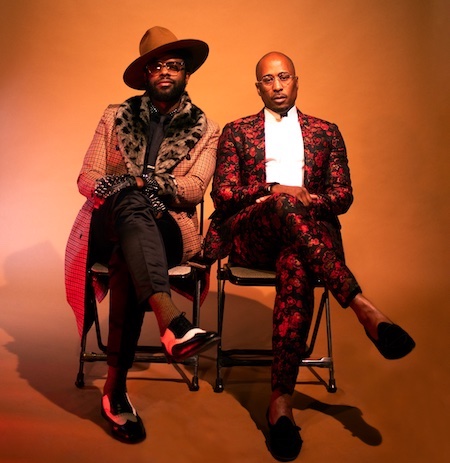
Adrian Younge (left) and Ali Shaheed Muhammad’s goal with Jazz Is Dead is to pay homage to past luminaries and evoke the sensibilities of their respective artistry during their heydays.
(Photo: Jazmin Hicks)Adrian Younge describes Jazz Is Dead as a “romance,” its macabre-sounding trademark notwithstanding. He’s a co-founder of the Los Angeles-based record label, a buzzworthy outfit that has been turning heads with eye-catching album artwork and a roster of luminary jazz veterans for the past two years.
After launching Jazz Is Dead 001 in 2020 — a compilation that featured vibraphonist Roy Ayers, saxophonist Gary Bartz, Brazilian jazz-fusion combo Ayzmuth, singer Marcos Valle and keyboardists João Donato, Doug Carn and Brian Jackson — Jazz Is Dead issued full-length serial LPs with each of those artists, playing along with a consortium of relatively unknown L.A.-based musicians, as well as Younge and his main co-conspirator, Ali Shaheed Muhammad, on an assortment of instruments — bass, guitar, clarinet, keyboards and percussion among them.
Younge likens making those albums to giving the musicians their flowers while they are still living.
“We are basically creating love letters to those who came before us,” he said.
“These luminaries have given us so much,” Muhammad added. “Our intent is to pay homage to them by having them in the studio, taking those influences that they had given us, then creating something that’s more of the now.”
Jazz Is Dead’s first batch of LPs became collectors’ items among crate-diggers who connect the dots between jazz samples used during hip-hop’s halcyon years and the original source material, often released on obscure labels likeBlack Jazz, Perception and Strata East. Younge and Muhammad’s goal wasn’t so much to give the artists a 21st-century overhaul as it was to evoke the sensibilities of their respective artistry during their heyday, which often was the late 1960s and early ’70s.
“We’re not doing anything that’s en vogue for the moment,” Younge explained. “We’re not coming to these legendary artists, saying, ‘Hey, the kids like trap music right now. Let’s do a trap album.’ There is no reason any of these folks to be on a trap song.”
Put in a broader international context, indeed, Jazz Is Dead resides in a DJ-centric ecosystem where artists and listeners seek to reconnect modern hip-hop, R&B and other hybrid dance music to its jazz roots. These efforts go back to the late 1980s — when Paul Bradshaw founded the influential U.K. magazine Straight No Chaser to track the bubbling acid-jazz and global underground jazz scenes in the wake of London’s Second Summer of Love — and the early ’90s, when Maurice Bernstein and Jonathan Rudnick spearheaded the New York dance party Groove Academy.
Since then, robust transatlantic initiatives like London’s jazz re:freshed and the recently departed Meghan Stabile’s Revive Music have extended the relationships. Then there’s the West Coast Get Down Scene, which has been buzzing for nearly a decade thanks to the meteoric success of bassists Thundercat and Miles Mosley, saxophonists Kamasi Washington and Terrace Martin and keyboardists Cameron Graves and Brandon Coleman, among others.
Besides the compelling JID010, a remix compilation on which left-wing hip-hop and broken-beat producers such as DJ Spinna, Georgia Anne Muldrow, Kaidi Tatham and Cut Chemist gave 10 tracks from its inaugural collection a more electronic makeover, the music on Jazz Is Dead releases is decidedly lo-fi and analog, built around rugged drumming, lumbering bass lines and abstract keyboard harmonies. Younge’s obsession with vintage analog recording techniques and instruments establishes the vibe of those albums. That vibe imparts the woozy sensation of someone waking up from a music-drenched dream, set in the early ’70s, and they recall more of the sonic qualities of the music than any distinctive melodies, grooves or solos.
This summer, Jazz Is Dead issued a follow-up compilation, JID011, consisting of tracks showcasing singer Jean Carne, bassist Henry Franklin, pianist Garret Saracho, drummer Tony Allen, keyboardist Lonnie Liston Smith, trombonist-and-woodwind duo Phil Ranelin and Wendell Harrison, and the L.A.-based ensemble Katalyst.
The accompanying musicians have also expanded to include guitarist Jeff Parker, flutist Scott Mayo, alto saxophonist Phillip Wack and tenor saxophonist Jaman Laws.
When discussing Jazz Is Dead’s artistic progression in the past two years, Younge compares it to a television series that steadily blossoms into greatness. He and Muhammad gained a lot of insight from working with their heroes such as Ayers, Bartz and Valle during the first run. In turn, they incorporated some of those lessons into the second series.
“Our first series was basically us realizing that we could create a proof of concept,” Younge theorized. “The fact that we could actually bring in someone like Roy Ayers or Marcos Valle to record with us. We learned so much from them. We grabbed some of the energy that gave us and poured into the second series of albums. It’s not easier for us to do it now; it’s more us having a better understanding of what we’re doing.”
Muhammad added that the learning curve has given them a deeper understanding of their intent behind Jazz Is Dead. “We’ve learned also from the first series to always remain open-minded and be mindful of past and what’s possible in modern times to project what the future can be.”
Younge and Muhammad both come from the expansive world of hip-hop. As a producer, Younge has worked with hip-hop royalty such as the Wu-Tang Clan, Souls of Mischief and Jay-Z. Muhammad was a member of one of hip-hop’s most cherished combos: A Tribe Called Quest. After A Tribe Called Quest’s breakup, Muhammad, singer Dawn Robinson, and bassist and producer Raphael Saadiq formed the short-lived but beloved neo-soul supergroup Lucy Pearl.
In 2013, Younge invited Muhammad to work on the Souls of Mischief’s album There Is Only Now. They officially joined forces as the Midnight Hour and released a 2018 eponymous LP that highlighted Muhammad’s penchant for jazz-laden grooves and Younge’s hazy, Blaxploitation-era arrangements. Soon after, the dynamic duo partnered with concert promoter Andrew Lojero and music-industry veteran Adam Block in launching a jazz concert series with the potentially polarizing name, Jazz Is Dead.
As a live music platform, Jazz Is Dead celebrates its fifth anniversary this year. Its first concert featured trumpeter Keyon Harrold on Dec. 17, 2017, at the Lodge Room in Los Angeles. Lojero recalls being frustrated with the tickets sales prior to the show, so he conceived the snarky trademark, Jazz Is Dead. And to his surprise, it caught on.
“The more I told people about the name of the series, Jazz Is Dead, the heavier the reactions it received,” Lojero said. “Some people loved it; others hated it. I realized that no matter what kind of reaction it got, it was exactly what was needed to tap into a younger demographic who was looking at this music as the stuff of their grandparents. We needed to figure out how to put an edge to [the branding].”
Younge sees Jazz Is Dead’s provocative branding as a rhetorical question instead of a definitive statement. “Jazz Is Dead basically provokes a response,” he explained. “There’s an academic side to it; there’s an irreverent side to it. But in all, it’s really an invitation to all open-minded, open-hearted folks to celebrate the spirit of the genre.”
“There’s so many ways you could analyze Jazz Is Dead,” Younge continued. “Especially when you think about who guards the music. Secondly, there are so many musicians who played and continue to play this music who hate the word ‘jazz.’ But there are so many other musicians who really embrace the word. But if you look what we’ve done for the last five years, do you think that we really believe that jazz is dead? If we called our label something else, we probably wouldn’t be as advanced right now as we are because those type of conversations would not have happened regarding what we are doing.”
Younge and Muhammad often recruit the veteran musicians for Jazz Is Dead recordings on Lojero’s recommendation soon after they perform at the Jazz Lodge. And no matter how busy their schedules are, the duo tends to accommodate with enthusiasm as they lead extemporary jam sessions inside Younge’s Linear Lab studios right across the street from the performance venue.
This year’s JID 013 Katalyst is the best album, so far, issued on Jazz Is Dead. What elevates it above the rest is that Katalyst is a nine-piece ensemble that has developed its own chemistry and sound prior to coming into the fold. Two years ago, Katalyst released its debut album, Nine Lives (World Galaxy Records), and it became a Bandcamp hit. On the new album, songs like the breezy “The Avenues,” the haunting “Summer Solstice” and the Marvin Gaye-influenced “Daybreak,” the grooves swing with more propulsion — the melodies and improvisations are more pronounced, and the tunes sound more developed.
Muhammad praises Katalyst as being part of the younger guard of musicians emerging from Los Angeles’ iconic Leimert Park neighborhood.
“They are keeping things very much underground, vibrant and alive,” he said. “We had the honor of having a few of those cats play on some of the albums we made with the jazz luminaries. So, it seemed only appropriate to record Katalyst. They are legends in the making.”
The other Jazz Is Dead albums certainly have their titillating charm. But so far, none of the musicians sound as if they are fully prepared to record with Younge and Muhammad’s coterie of musicians, thus yielding some tentative, vamp-heavy tracks. After all, Younge and Muhammad share top billing on all of the records. So, basically, the iconic musicians are entering their world.
Greg Paul, the drummer for Katalyst, also participated on the sessions with Ayers and Bartz. He describes Younge and Muhammad’s creative process of making records as “definitely unorthodox.”
“The musicians get in and try to flesh out a basic idea from musical sketches. That’s it,” Paul said. “There’s not really too much thinking about it; then overproducing the results. When they presented the idea to us to make a record, I was definitely interested in seeing how our two styles would merge. As a band, we are kind of similar. When we perform, the music is sort of off the cuff. Our music is very much in the moment. While recording, we took maybe two takes, max, on each song. And that was it.”
In an April 2020 DownBeat interview, Valle recalled being both excited and a bit nervous when he recorded with Younge and Muhammad because of the quick turnaround of writing music arrangements and lyrics then recording within five days. After Valle, drummer Malachi Morehead and Younge on bass recorded basic tracks, Muhammad and Younge added overdubbed instrumentation and vocals.
“When I saw how everything was happening, I realized that it was an incredible experience,” Valle said. “Even for the vocals — the results were so surprising, because when we recorded the bass, drums and Rhodes, I started creating the vocal arrangements very hurriedly. We didn’t have time to think about changing a phrase here or there. I understood that they were looking for my first impressions of the songs. They were trying to capture that moment. It was totally different from what I did before.”
After doing some swift post-production on the recordings, Younge says that it’s always rewarding to send out the finished product to the musicians. “The real reward is saying, ‘Hey, Henry Franklin, this is your finished album.’” Younge said. “Then watching them hear it because they haven’t heard themselves on an album since the ’70s or ’80s. It’s really moving.”
Lonnie Liston Smith said he was surprised when he heard the results for his first single, “Love Brings Happiness,” a percolating jazz-funk excursion that features post-production vocals from Loren Oden added to the mix. The song could easily fit on any of Smith’s classic albums recorded for Flying Dutchman or RCA. He recalled being taken aback about the recording procedures because he hadn’t written any songs for the date.
“It was strange because you usually come in with a few songs in mind that you want to record,” Smith said, “Instead they had these little motifs to work on. In the studio, it was just me, Greg Paul on drums and Ali on bass. After we developed these little motifs, they developed around whatever we finished with. So, I don’t know how it’s all going to come out. I’m looking forward to hearing the finished album. It’s going to be interesting. The first single, ‘Love Brings Happiness,’ came out pretty good. I said, ‘OK, I can live with that.’”
From a live music perspective, the Jazz Is Dead brand has expanded well beyond its boutique albums. Presented by the adjacent ArtDontSleep artists management and promotion company, Jazz Is Dead has thrown concerts freaturing a wealth of top-tier talent outside its label roster — bassists Ben Williams and Christian McBride, harpist Brandee Younger, vibraphonist Joel Ross with saxophonist James Brandon Lewis, singer and sound sculptor Melanie Charles and pianist Dom Salvador.
With a new series of recordings expected this year, Jazz Is Dead is also mapping out a West Coast touring package with dates in Los Angeles, San Francisco, Portland and Port Townsend, Washington. The lineup, consisting of Younge, Muhammad, Doug Carn, Henry Franklin and Katalyst, was also scheduled to host a showcase at this year’s Newport Jazz Festival.
Lojero hopes that the touring package will expand to 15 cities in North America and 15 cities in Europe, Japan and Australia.
“We’ve developed a trust within a community in Los Angeles and other places where even if they don’t know the artist that we’re presenting, they trust that they’ll still be attending one of the best parties in town,” Younge said.
In addition to prepping for this mini tour, Muhammad and Younge have been busy scoring music for the Onyx Collective’s TV show Reasonable Doubt, which is now streaming on Hulu; and Starz Originals’ Power Book III: Raising Kanan.
Younge reports that they are also working on movie scores that are currently in the production stage.
And, of course, there’s the continuation of the Jazz Is Dead album series showcasing more unannounced luminaries.
“We’ve been recording a lot,” Lojero said. “I don’t think we’ve recorded this much before. We have enough for our third and possibly fourth batch. We’ve never had quite a year like this, of people ruining our schedules and blessing our lives.”
“It’s hard to think of life before Jazz Is Dead,” Younge said. “Because we’re in this thing daily now. This cyclical process that we are addicted to in terms of making records with our jazz heroes has come to the point where we have to figure out how to make time for other things. When Andrew calls us to work with these legendary musicians, we can’t say no, because it is our divine responsibility to work with them. We have to continue the conversations with these legends. It’s an ongoing love story.” DB
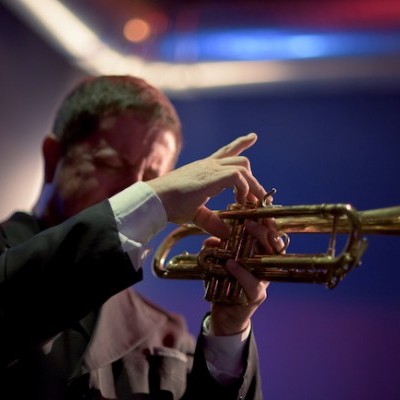
Jim Rotondi was acclaimed for his wide, round trumpet tone, remarkable virtuosity and assured swing.
Jul 9, 2024 11:35 AM
Jim Rotondi, a renowned hard-bop trumpeter, composer and educator, died suddenly on July 7 at a hospital in France. He…
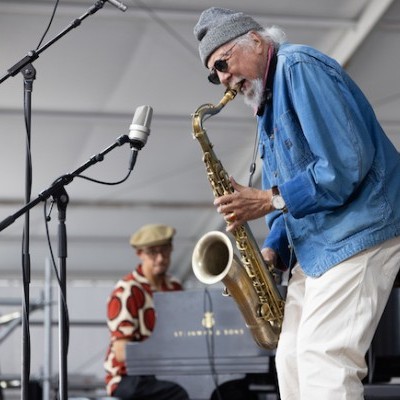
Charles Lloyd, seen here at the 2024 New Orleans Jazz & Heritage Festival, makes DownBeat Poll history!
Jul 11, 2024 12:23 PM
The incomparable Charles Lloyd swept the 72nd Annual DownBeat Critics Poll, becoming the first artist ever to earn…
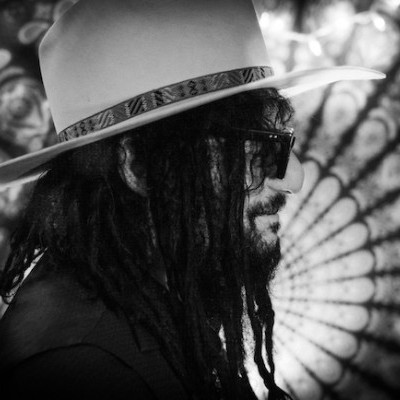
“Being president of Blue Note has been one of the coolest things that ever happened to me,” Was said. “It’s a gas to serve as one of the caretakers of that legacy.”
Jun 4, 2024 12:21 PM
Sitting with Don Was is a comfortable and unhurried exercise. He may seem slightly reserved at first, but ideas and…
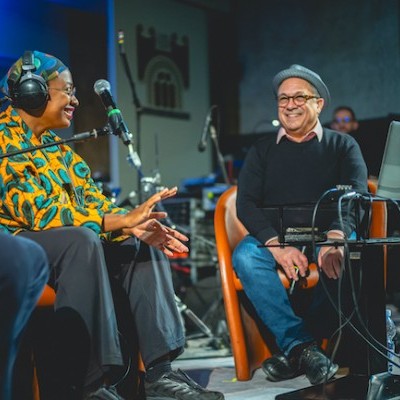
“She reminds me of my childhood and makes we want to cry,” Cécile McLorin Salvant, pictured here with writer Ashley Kahn, said of Dianne Reeves.
Jun 11, 2024 12:31 PM
Italy’s Umbria Jazz Winter is one of those rare annual festivals that not only coincides with a major holiday —…
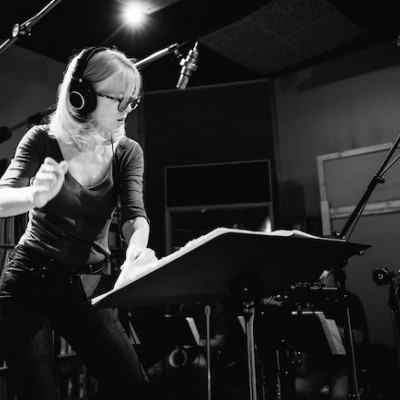
Maria Schneider said of Decades, her new compilation release: “I just wanted to create something, put it in a beautiful box and say, ‘Look at what we did.‘”
Jun 18, 2024 12:00 PM
Maria Schneider opened the sleek black box and placed it on a coffee table in her Manhattan apartment. Inside lay the…